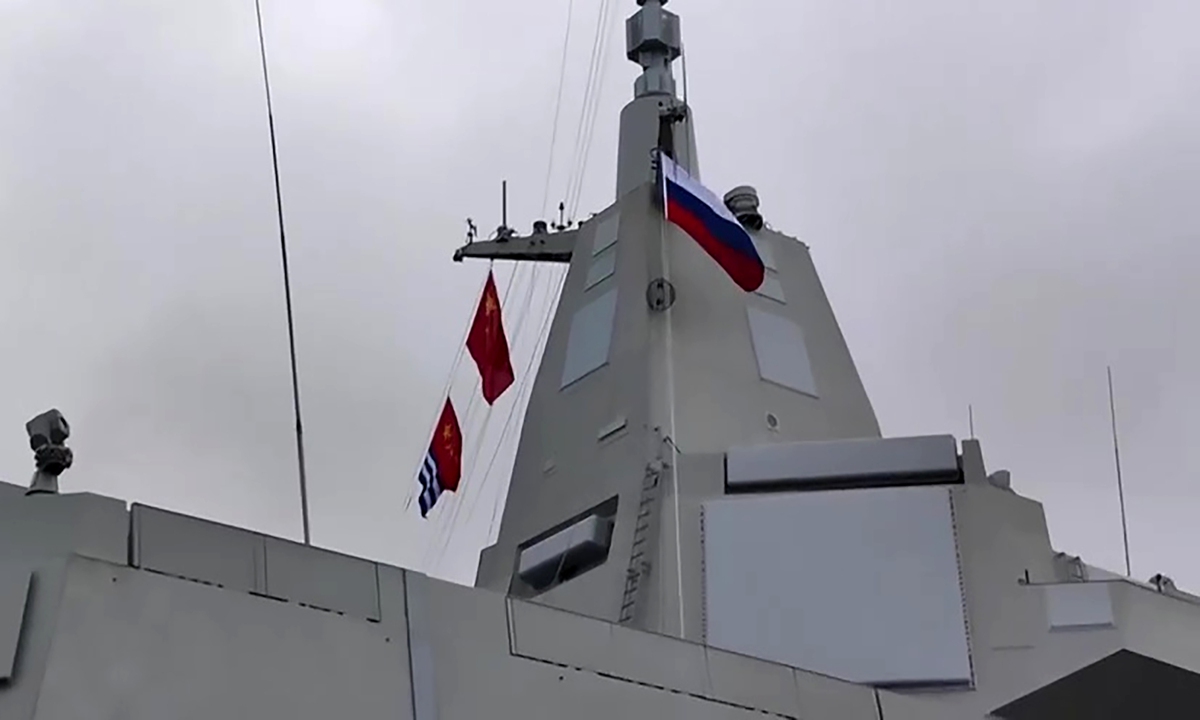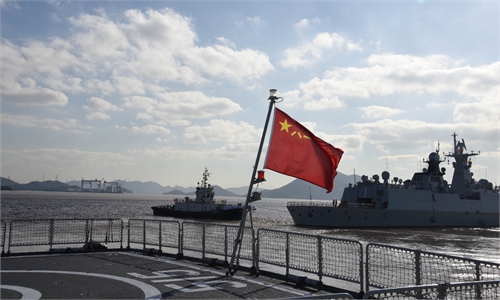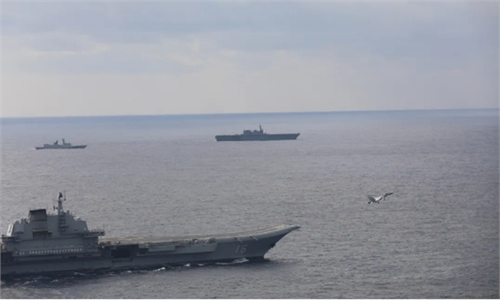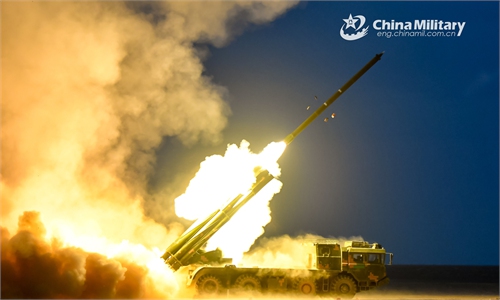China, Russia kick off joint naval drill in East China Sea, promote new steps in tackling maritime security threats

The Type 055 large destroyer Nanchang attached to the navy of the Chinese People’s Liberation Army (PLA) Northern Theater Command is seen during deployment as part of the Russian Vostok 2022 strategic military drills lasting through September 7, 2022. The Russian Defense Ministry published footage of the meeting of the two countries’ warships in the Sea of Japan on September 2, 2022. Photo: VCG
China and Russia on Wednesday launched the Joint Sea 2022 naval drill in the East China Sea, a move naval officers and experts said reflected a high level of strategic mutual trust and will further promote the two navies’ capabilities in jointly dealing with maritime security threats, and contributing to the safeguarding of peace and stability in the region and the world.
After setting off from a naval port in Zhoushan, East China’s Zhejiang Province on Tuesday, the Chinese warships arrived at the designated area in the East China Sea at noon on Wednesday, China Central Television (CCTV) reported on Wednesday.
After rendezvousing with their Russian counterparts, they formed a joint naval flotilla and started exercises, including maneuvering in formation and communications practice, marking the first phase of the exercise, the emergency assembly, the report said.
In this starting phase of the entire joint exercise, the Chinese and Russian naval flotillas were required to meet up with each other at the designated location and the designated time after having continuously sailed for a day and a night, Senior Captain Zhang Yiwu, the commander of the Chinese flotilla in the exercise, told CCTV on Wednesday.
Based on the settings of the whole exercise, the Chinese flotilla organized practices before the drill started, so that the vessels and the sailors were able to maintain high combat readiness and enter the exercise in their best conditions, Zhang said.
The exercise has three phases — emergency assembly, joint operations, and separation and withdrawal, according to the report.
Coming from the People’s Liberation Army (PLA) Eastern and Northern theater commands, the participating forces of the Chinese Navy include the Type 052D destroyer Baotou, the Type 052C destroyer Jinan, the Type 054A frigates Binzhou and Yancheng, the Type 903A comprehensive supply ship Gaoyouhu, a submarine, two early warning aircraft, two anti-submarine patrol aircraft, three helicopters and dozens of marines, with the Jinan being the command ship on the Chinese side.
The Russian Navy sent forces including the guided missile cruiser Varyag, the large anti-submarine ship Marshal Shaposhnikov, the corvettes Hero of the Russian Federation Aldar Tsydenzhapov and Sovershennyy, and the replenishment ship Pechenga.
In the exercise, which is scheduled to conclude next Tuesday, the two naval forces will practice joint air defense, artillery firing at sea targets, joint anti-submarine operations, joint blockade and joint rescue, according to announcements from the PLA Navy and the Russian Defense Ministry over the past few days.
The drill reflects a high level of strategic mutual trust between the Chinese and Russian militaries, as both sides sent their main combat vessels with advanced equipment, a Chinese military expert who is familiar with China-Russia joint exercises and requested anonymity told the Global Times.
Such a joint naval drill between China and Russia, both permanent members of the UN Security Council, also has significance in safeguarding peace and stability in the region and the world, the expert said.
The Joint Sea series is the largest series of bilateral joint naval drills between China and Russia, and it has become a vital platform for cooperation between the two militaries since the first round was held in 2012, observers said.
With 10 years of experience, both sides have formed mature and standard organizational methods to carry out joint drills, leading to continued enhancements in the two forces’ capabilities in joint operations, analysts said.
Over the past 10 years, both sides kept deepening their exercise courses, expanding their exercise areas, standardizing their organizational models, coordinating closely and showing a high level of mutual trust, Rear Admiral Wang Yu, the executive director of the Joint Sea 2022 from the Chinese side, said in the CCTV report.
“We will continue to deepen cooperation and push forward new steps in jointly tackling maritime security threats,” Wang said.




